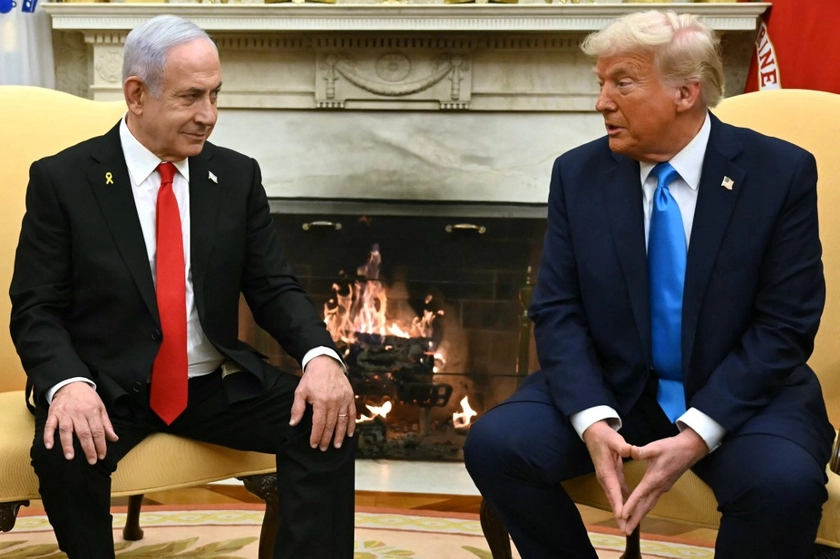Since the beginning of Russia’s full-scale invasion, Ukraine has become one of the most heavily mined countries in the world.
According to Ukraine’s Ministry of Foreign Affairs, about eightmillion hectares of land is now mined in the country. Of these, six million are in the temporarily occupied territories and twomillion have already been liberated from Russian occupation.
JOIN US ON TELEGRAM
Follow our coverage of the war on the @Kyivpost_official.
The Ministry calculated that the total area of mined land constitutes 30 percent of the country's territory – more than 174,000 square kilometers. This spans private territories, critical infrastructure, bodies of water, forests and fields.
To tackle a problem on such a scale, the Ministry took an “outside the box” approach and partnered with creative agency Saatchi & Saatchi Ukraine, and the agro-industrial company Kernel, to set up The Minefields Honey project.
What is the project about?
The basic idea is to use drones to sow mined fields with seeds of honey plants, therefore avoiding human contact with the mines. Their nectar will be collected by bees. Thus, Minefields Honey!
The Ministry plans for Ukrainian diplomats to take this honey to meetings and on work trips, handing it to public figures around the world.
The project's creators conducted consultations with agronomists, the State Emergency Service, Dronarium Ukraine (a collective of drone enthusiasts) and the Union of Beekeepers of Ukraine. This involved a combination of preparatory work, test seeding with drones and seeking professional advice on various elements.

Trump Says He Could Pressure Russia, Prefers Not To
The project is set to be fully operational from the next agricultural season and a website for pre-ordering honey is already in place.
Background to the concept
Kostya Shnyder, creative director of Publicis Groupe Ukraine & Czech Republic and Saatchi & Saatchi Ukraine, told Kyiv Postthat the product aims to become a powerful symbol to drawattention to the new realities in Ukraine.
“Minefields Honey is a product that should not exist in the modern world; however, due to the war and the area of mined territories, it has become our reality,” Schneider said.
He emphasized that the honey will be a limited product and is not aimed at conquering the global market through store sales.
“First of all, it is intended to be sent to diplomats and influential citizens of other countries who can help Ukraine in de-mining," Schneider summed up.
How will the project work in practice?
Kateryna Spivakova, communications director of the agro-industrial company Kernel, reported that most honey plants will be sown in the front-line zones, specifically in the Chernihiv and Sumy regions.
"We take a field where, for example, corn or sunflowers were supposed to be growing, but the field cannot be worked on because of mines,” Spivakova told Kyiv Post. “The seeds are then planted using drones.”
During the spring season, drones will begin scattering the honey plant seeds. As soon as herbs start blooming, the bees will take over. Beehives will be situated in a safe and mine-free area next to the fields.
A unique beehive design has been developed for the project,shaped in the form of a mine danger sign.
How is it being funded?
According to Schneider, all project participants are working purely on a voluntary basis. "It’s a social project. Everyone who helps, advises and supports us does so voluntarily,” he explained.
What is the ultimate aim of the project?
The Ministry believes that the collected honey will act as apowerful communication tool to attract more international partners, donors, and additional resources to de-mining Ukraine.
“The project will allow [us] to draw more attention to the problem of Russian mining of Ukrainian land and mobilize additional resources to solve it,” the Minister of Foreign Affairs,Dmytro Kuleba, announced at the start of the project.
Mixed opinions
Not everyone in Ukrainian political circles is favorable to the project. According to Ivanna Klympush-Tsintsadze, head of the Verkhovna Rada Committee on Ukraine's Integration into the EU, the Foreign Ministry should focus on more important matters.
“It sure would be nice to focus on matters that directly concern the Ministry of Foreign Affairs. If we have that many resources to do something on the side, then great. But unfortunately, we do not have enough resources even for the simplest things,” said Klympush-Tsintsadze said in a comment to Kyiv Post.
“In my next trip abroad, I would much rather take a fragment of a missile or a toy from a house destroyed by a missile strike. And it would be much more impactful than any sweet treat,” she added.
Time will tell whether the Minefields Honey project will prove the diplomatic nectar that the Ministry hopes it to be.
Meanwhile, Kyiv Post has requested further information from the Ministry about how pre-ordering of honey on the website will work; how the price of the product will be set; and how funds from the sale of “minefields honey” will be distributed.
CORRECTION: A previous version of this article put the area of mined Ukrainian land at 174,000 square meters. It is in fact 174,000 square kilometers.
You can also highlight the text and press Ctrl + Enter











